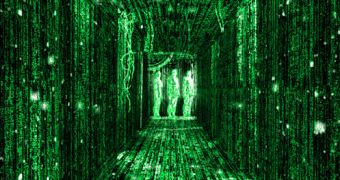Reality: everything that is, whether or not it is observable or comprehensible. This pretty much means that the real world could be anything but what we expect or know it to be. Did you know that there is a great probability that we live in a computer simulation rather than that we actually exist in an ultimate reality? The Matrix doesn't seem so far-fetched now, does it?
The greatest nightmare of a physicist is not nuclear holocaust as much of you might think, but not being able to comprehend the fundamental nature of the universe. If that weren't true, then why would we be searching for knowledge, the Theory of Everything, how the universe came to be, whether it is infinite in time and space or even how will it end and would we survive that end. How could we tell the real world from a computer simulation?
Michael McGuigan from the Brookhaven National Laboratory believes that virtual realistic worlds could evolve so much in a few years that we wouldn't be able to make a difference. Alan Turing proposed in 1950 an artificial intelligence test, stating that a judge conducting a conversation with a machine and a human being should be unable to distinguish between man and machine. Alternatively, while observing and interacting with an artificial world, the judge would become unable to make a difference between simulation and reality.
"By interaction we mean you could control an object - rotate it, for example - and it would render in real-time," said McGuigan.
Photorealism
Computers today are able to create artificial worlds which would be undistinguishable from reality, however a scene usually requires several hours to render the objects. This would soon be solved with future more powerful generations of computers. For the human eye, even a 30-frame-per-second photoreal image would appear to be 'real'.
Using the help of the Blue Gene/L supercomputer at Brookhaven National Laboratory, McGuigan plans to test whether such an artificial world exists. Blue Gene/L is one of world's most powerful computers, having a processing power equivalent to 2,000 standard PC processors - 103 trillion floating point operations per second, while a PC uses only 10 floating operations per second.
One of the most important aspects of computer simulations is the ability to mimic reality. An interplay of light with objects, for example, would be rendered 822 times on the Blue Gene/L supercomputer than on a PC, without any parallel processor optimization.
Still not powerful enough
"The nice thing about this ray tracing is that the human eye can see it as natural. There are actually several types of ray-tracing software out there - I chose one that was relatively easy to port to large number of processors. But others might be faster and even more realistic if they are used in parallel computing," said McGuigan.
Although it is one of the most powerful computers in the world today, Blue Gene/L is still not fast enough to create realistic representations. "You never know for sure until you can actually do it. But a back-of-the-envelope calculation would suggest that it should be possible in the next few years, once supercomputers enter the petaflop range - that's 1,000 teraflops," explains McGuigan.
However, photorealistic graphics wouldn't be quite enough if the object doesn't behave in a realistic way, argues University of Sheffield researcher Paul Richmond.
Animation
"I'd like to see a realistic model of the Russian ballet. That's something a photographer would choose as a subject matter, and that's what we should aim to convey with computers. If all that is there in a diffusely-reflecting sphere sitting on a diffusely-reflecting surface, then we've been able to pass the test for many years now. But Turing didn't mean for his vision to come true so quickly," said Richmond.
McGuigan agrees. "Modeling that fluidity is difficult. You have to make sure that when something jumps in the virtual world it appears heavy. Physical reality is about animation and lighting. We've done the lighting now - the animation will follow."

 14 DAY TRIAL //
14 DAY TRIAL //